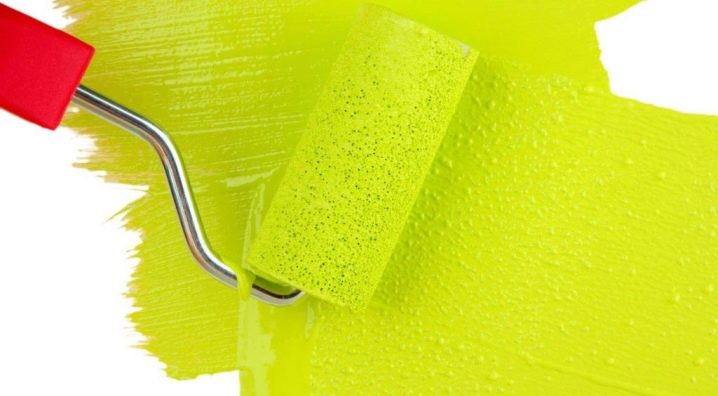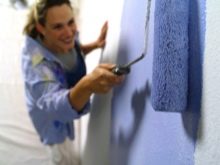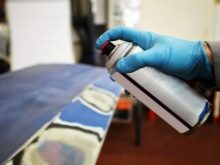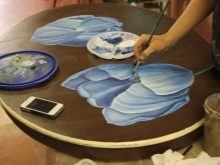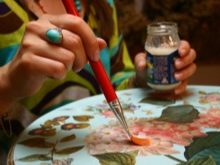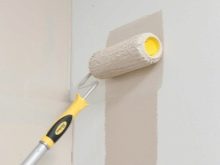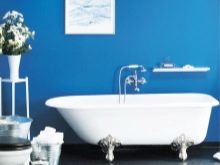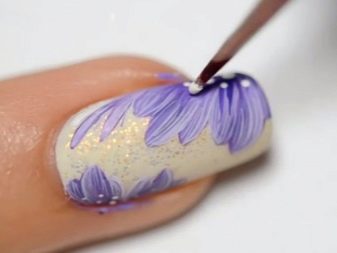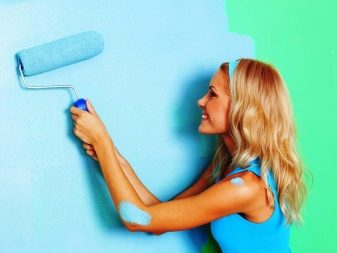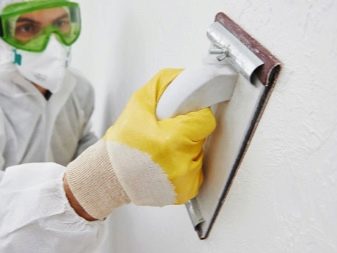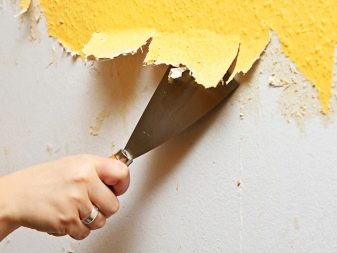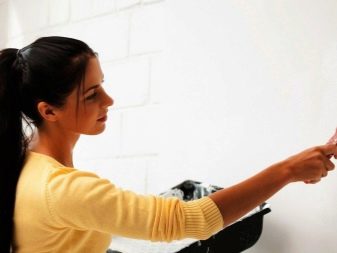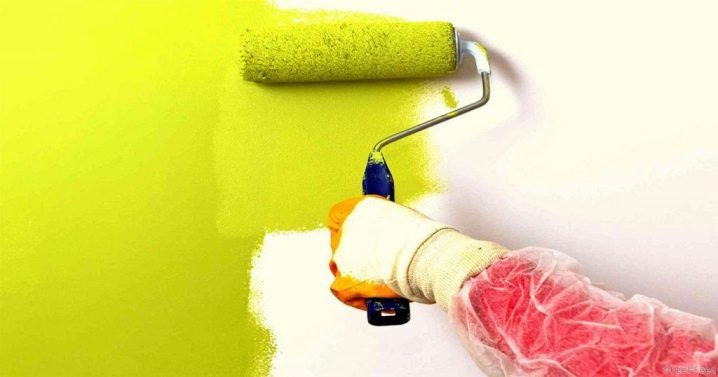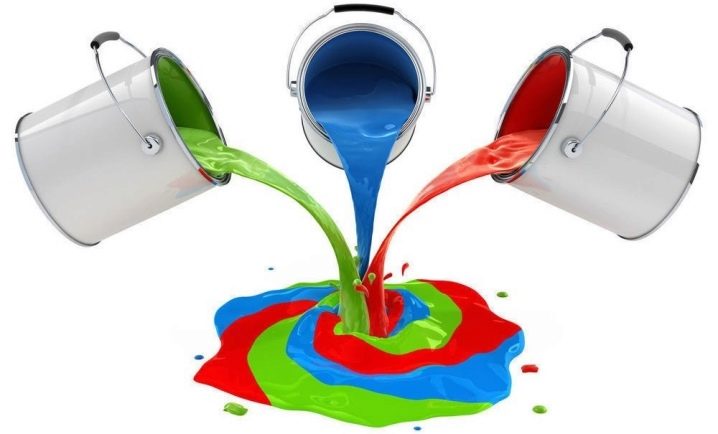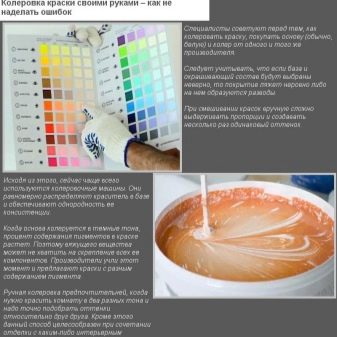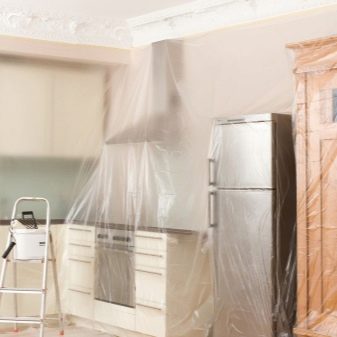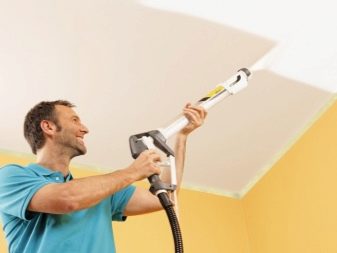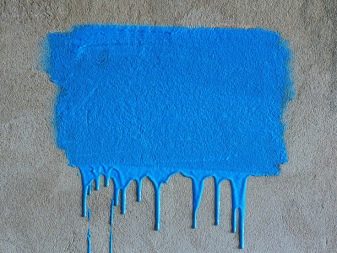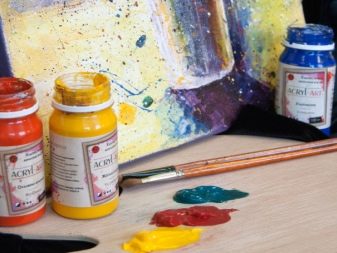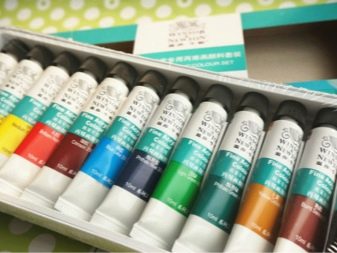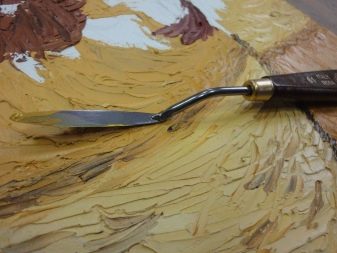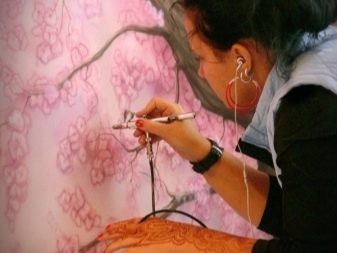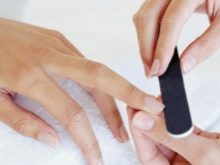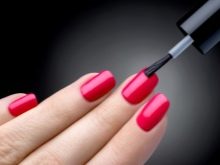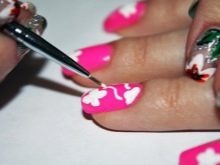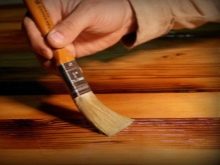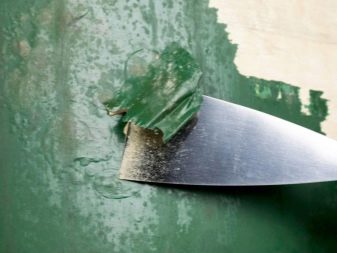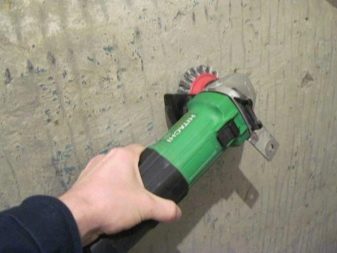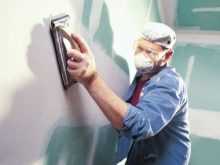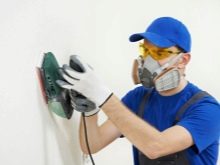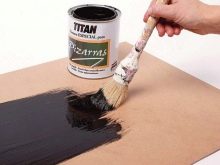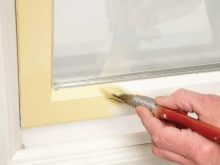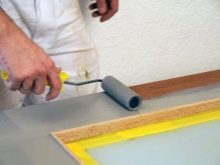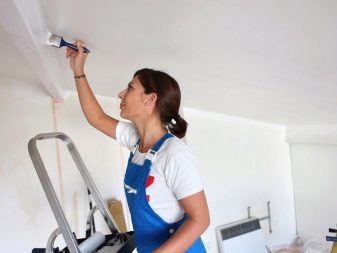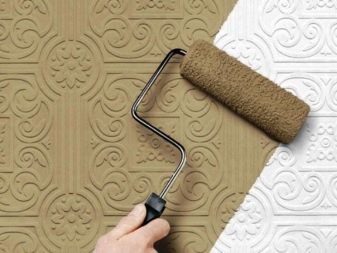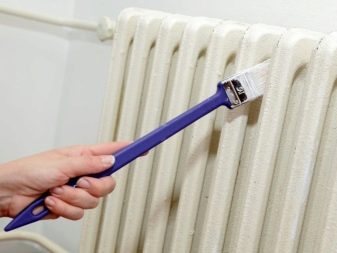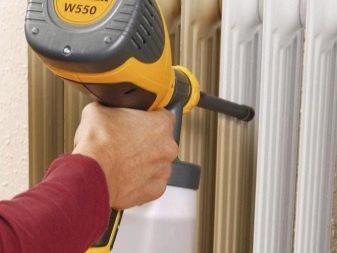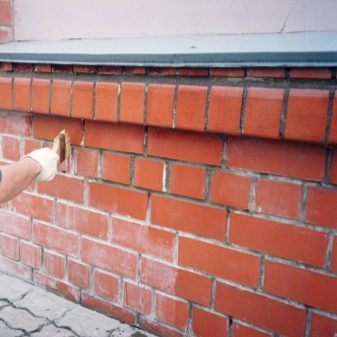How to use acrylic paints?
No matter how hard chemists and technologists try to create new types of paint and varnish coatings, people’s commitment to using familiar materials will not go anywhere. But even the most traditional solutions should be applied wisely, carefully observing the technology and basic requirements.
Application
Acrylic based paints are recommended for use on the walls and ceilings of living rooms. In addition to interior work, they can be used in the artistic processing of wood and other surfaces. Automotive workshops and private craftsmen often use cartridges with such compositions to give the desired color to metal or plastic parts. Acrylic interior paint is appreciated due to the formation of an ideal texture and a wide variety of shades.
Besides, applying it is quite simple, which is appreciated by very busy people and professional repairmen.
Compositions based on acrylic resins also help in various decorative and applied works.It is easy to paint high quality furniture with their help. Note that it will be necessary to carefully prepare the wood, and the interesting shine appears only at a strictly defined angle of view, with certain lighting characteristics.
After applying the draft layer, you can either paint the table, the cabinet, or process them using the decoupage technique.
Acrylic paints can also be used on plaster, this solution helps to protect the main finishing material from the harmful effects of water. Because of this, it can be applied even in bathrooms, where the plaster itself does not show its best. You can paint it with both matte and glossy varieties of acrylic dyes, both of which fit the walls and the upper part of the room equally well. That is, you still release yourself from the care of the ceiling decoration, from the painful choice of the best option for it.
The original use of acrylic paint is its use for a manicure; The attention of specialists was attracted by a wide variety of colors, and the clients themselves appreciate the ease of operation and the ability to independently perform all the necessary manipulations. Other important advantages of such dyes are the absence of poisonous components, ease of correction after application, the ability to paint both biological and synthetic nails.
What paint can be applied?
Building paints, including acrylic, are not always used over completely clean surfaces. Often there is a situation where the base has already been painted earlier. It is quite easy to apply an acrylic coating to the oil paint; in order to increase the adhesion between them, it is better to grind the wall and treat it with a primer.
You should first check whether the original paint itself is firmly held, at the slightest detachment it will be better to first remove the defect or completely remove the paint layer, and only then begin to work.
Acrylic compositions can be applied to the water-based paint only in the absence of the slightest deformations, first of all, delamination and bulging places.In case of a pronounced violation of the integrity of the layer, it will be better to remove it at all, and then perform a new color from scratch.
If earlier an alkyd paint was used to paint the same surface, two-component acrylic compositions should not be used for repainting; one-component dyes, including aerosol, can be used. But in this case it is required to spray the finishing layer at the most in half an hour after applying the alkyd mixtures.
The question whether it is possible to overlap with latex acrylic paint, and whether there is any risk at the same time, is solvable. As in other cases, in the absence of obvious defects or insignificance, such a combination of danger does not constitute them. When the original layer is enamel, it all depends on the quality of acrylic paint, on how strong adhesion it has.
Resolve all doubts helps trial paint a small portion of the surface, preferably invisible to observers.
Precautionary measures
Regardless of the quality of construction paints, they all can harm a person, if the composition is used incorrectly, disrupt the work technology.Vapors of every dye are poisonous; individual substances in their composition, can provoke an allergic attack of various strengths, irritate the skin and even sometimes lead to the appearance of burns.
Whenever possible, air the room that is painted.to avoid excessive concentrations of hazardous substances. And even if the windows open regularly, wearing a respirator or at least a gauze bandage is fully justified.
In addition to these, always use rubber gloves, thick clothes, and most importantly, carefully choose the composition of paint, preferring products of reputable manufacturers.
How to mix?
In addition to security reasons, people are also naturally interested in the combination of colors of acrylic paint. The fact is that completely original and unique in appearance tones often cost too much. The solution is precisely the mixing of parts of the basic palette together. To get absolutely any color, just seven basic tones will suffice; so, to make olive paint, you need to combine yellow and green Kohler.
Exact proportions can only be picked up by experience.developing visual perception and spatial thinking, otherwise it will not be possible to understand exactly how the created paint will look on the wall or on the ceiling.
In order to avoid mistakes, if you do not yet have the necessary experience, you should gradually introduce a color scheme, and after each portion evaluate the result obtained on a surface that you do not need. But even in this case, haste is contraindicated, wait until the control smears have completely hardened, so that you know exactly what the finish color will be.
Replacing personal experience and observation will not help even the most detailed and carefully compiled tables of color combinations.
How to paint: a detailed workshop
When the mixture is ready, it is very important to apply it correctly, otherwise all the effort and collected information will be wasted. The technique of applying acrylic paint with an airbrush is not too complicated, but you will have to strictly follow the order of work. As in the usual form of painting, all items that can not be transferred, as well as all architectural elements that can not be painted, you need to close the polyethylene, driving the brackets with a construction stapler.
You can work only with normal viscosity of the compositionwhich should completely flow out of the test can in 26-28 seconds. If the dye is too thick, it must be further diluted with water.
Then adjust the compressor, focusing on the desired performance. A test run is required, with his spray gun close to the surface of the wall at 0.4-0.5 m and see if it does not work out significant stains. Having found them, you should reduce the flow rate of the ink mixture.
For beginning artists it is better to use acrylic paints in tubes. Note that with such compositions it is good to work with brushes of both natural and artificial nature; it is easy to use a palette knife for drawing by them, and if using a special technology to dilute the dye, an airbrush can be used. Note that the paint will dry out rapidly, and remove from the tube just as much as you can apply in the next few seconds.
If the palette is dry, you will additionally need a spray bottle to moisten the painted surface.
But nevertheless painters on a water basis often use painters. They should carefully read the instructions from the manufacturers, this is quite enough to achieve a good result.
The coloring composition on the gel polish is used to create a manicure; As usual, staining itself is preceded by the removal of the cuticle, the filing of nails and the degreasing of the surface. The base is dried under ultraviolet rays for 120 seconds, then a selected decorative preparation is applied.
Returning to the use of acrylic paints in the construction and repair, it is necessary to say a little about such a frequent task as coloring woodcarving. Mixing with the color scheme is carried out according to the general rules, and the preparation of the surface for finishing is carried out, impregnating it with a yellow-brown stain. Be sure to make three different composition of stain, each subsequent will be lighter than the previous mixture. Then gently, with a brush or airbrush paint over all the small details.
The main requirement in this case is not to rush, because the cost of a mistake is too high.
Surface preparation
Painting gives a good result, and the created layer looks attractive only when, along with the use of good paint, the requirements for material preparation are met. Different coatings should be prepared in a special way, but the first step is always a close inspection.Make sure that the old coloring layer is really strong, will help a metal spatula. If he does not remove the old coating, it will have to be removed, sometimes you have to use a grinder with special nozzles.
Important: sandpaper is ineffective in this case.
To bare the source material, and the paint then lay down smoothly, you need to grind for a long time., with a lot of dust. Do not start work without wearing a gauze bandage, but rather a respirator. From every door, walls and other surfaces, each nail must be removed, a different fastener, if there is no such possibility, it is immersed in the material as much as possible. Be sure to treat all rusty hardware with a rust remover.
It is quite possible to apply acrylic paint on concrete, but first it will have to be polished properly, since the surface itself is rough to the touch.
For your information: you can only paint completely dry concrete.
If you have to brush on plywood, you need to remove all dust and sawdust from it. As in the previous case, the surface must be dried well, otherwise there is a high risk that the sheet will warp.Cheap varieties are not only polished, but always sanded.
It so happens that it is necessary to apply acrylic paint on things made of plastic. Plastic products must be washed and degreased, evaporated pollution in a special chamber.
If it was required to paint chipboard, or acrylic paint will be applied over the fiberboard, first eliminate all cracks, scratches and chips, the seams are additionally sealed. As always, get rid of the slightest fatty deposits, crusts and stains.
And before painting on whitewash, it is checked, scratched specifically to determine the strength. If you notice damage or find a thin coating, it is better to give up your intention.
Foam painted with modern paints well; but it will be necessary, if this is not a new material, but previously installed blocks and decorative items, to remove dust, cobwebs and other contaminants. Any technological seam, any joint between the blocks is carefully puttied, if necessary, sealed with special mixtures. It is recommended to paint the foam in two or three doses.
Important: it is impossible to paint hot batteries of heating in any way, this not only adversely affects the properties of the coating, but also is fraught with burns.The surface is prepared in the same way as in other cases when working on metal or plastic.
A special case is the painting with acrylic compositions on the brick. The basic material is carefully treated with antiseptic preparations to avoid the occurrence of fungal colonies.
It should be noted that it is possible to paint the brickwork no earlier than 12 months after the completion of construction or repair work.
The application of acrylic paint on the glass is quite allowed. But first, the necessary product is washed and cleaned (remove fat). After washing, the remaining moisture is removed with a clean, dry cloth, without relying on natural evaporation.
Completing our review of the preparation for coloring wallpaper. The surface relief is inversely proportional to the appropriate pile size for the roller used. The flooring is protected by cardboard, hardboard; unwanted protection of foil-coated wood for a long time. Plinth and platband save masking tape.
To paint the surface without staining, it is enough to follow all the above rules and nuances.
Primer
It is unacceptable to ground a wooden street wall with water-based products, only an oily substance is suitable.We recommend using the soil only from well-known manufacturers - its price is fully justified.
Tools and materials
A fair amount of success when using acrylic paints depends on the tool used. One roller to confine will not work, you need at least two - with a shortened and elongated or telescopic handle.
In addition to these devices, several spatulas, differing in length, wide film and painting tape will necessarily be included in the basic set.
Airbrush will be required only to work in a large area.
Coloring
The coating with acrylic paint of wooden surfaces is made horizontally. Wall, facade or ceiling, as well as the floor is painted from the corner. When you need to create a layer of paint on a tree used in furniture or in a decorative object, paint from one edge to another.
Convenience sprayers - not a reason to forget that they should be led carefully, at one distance. Acrylic paint dries well, and to quickly dry it, faster than usual, you can apply paint with rollers in a thin layer.
If you do not have experience in professional painting, use of drying equipment is not recommended.
How to varnish to cover?
It depends on the type of protected products - wood is covered with furniture varnishes, natural parquet flooring, garden furniture yacht. Oil formulations perfectly manifest themselves in wood finishing, but they dry for too long. Alkyd varnish less wear and not so much wet, dry faster. Acrylic serves as much as the microclimate in the room allows.
Read more about the types and application of the spray gun, see the following video
